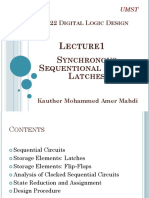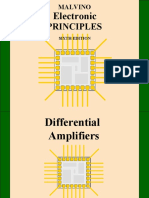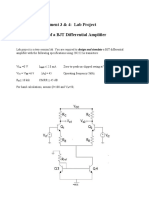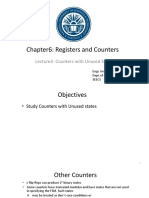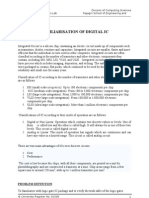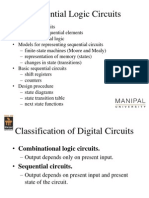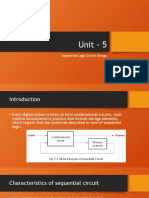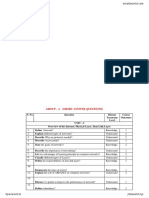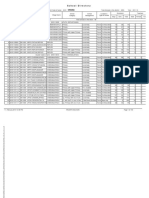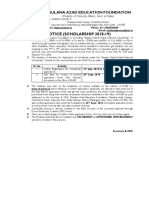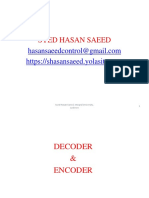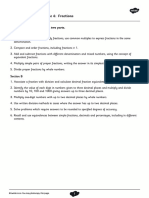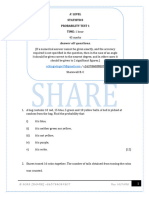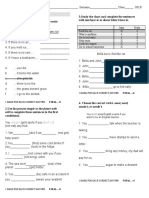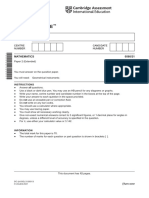0% found this document useful (0 votes)
408 views34 pagesSequential Logic Circuits
This document provides an overview of sequential logic circuits. It discusses the differences between sequential and combinational logic circuits, noting that sequential circuits contain memory elements so their outputs depend on both present and past inputs. It describes asynchronous and synchronous sequential circuits and various sequential circuit models including the combinational circuit model, Mealy machine model, and Moore machine model. It also covers common memory devices like latches and flip-flops, explaining that latches are controlled by level signals while flip-flops are controlled by clock signals. Specific latch and flip-flop devices are listed along with their descriptions.
Uploaded by
RockRahilCopyright
© © All Rights Reserved
We take content rights seriously. If you suspect this is your content, claim it here.
Available Formats
Download as PPT, PDF, TXT or read online on Scribd
0% found this document useful (0 votes)
408 views34 pagesSequential Logic Circuits
This document provides an overview of sequential logic circuits. It discusses the differences between sequential and combinational logic circuits, noting that sequential circuits contain memory elements so their outputs depend on both present and past inputs. It describes asynchronous and synchronous sequential circuits and various sequential circuit models including the combinational circuit model, Mealy machine model, and Moore machine model. It also covers common memory devices like latches and flip-flops, explaining that latches are controlled by level signals while flip-flops are controlled by clock signals. Specific latch and flip-flop devices are listed along with their descriptions.
Uploaded by
RockRahilCopyright
© © All Rights Reserved
We take content rights seriously. If you suspect this is your content, claim it here.
Available Formats
Download as PPT, PDF, TXT or read online on Scribd
/ 34











